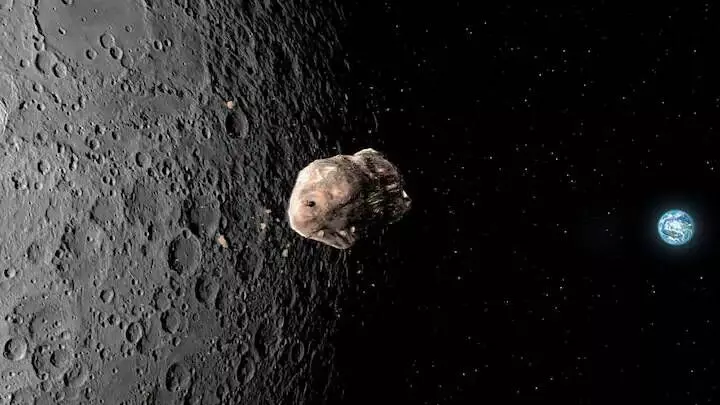Asteroid Once Feared to Hit Earth May Collide with Moon in 2032, Say Scientists
Asteroid 2024 YR4 may hit the Moon in 2032, offering scientists a rare chance to study an impact up close. Earth remains completely safe.
image for illustrative purpose

An asteroid that once posed a potential threat to Earth is now being closely monitored by scientists for a different reason—it may collide with the Moon in 2032.
Asteroid 2024 YR4, first detected in December 2024, measures approximately 53 to 67 meters in diameter. Initially flagged for its slight but notable risk to Earth, the space rock has since shifted its course, and astronomers now believe its path may intersect with the Moon instead.
New Data from James Webb Telescope Alters Risk Profile
In May 2025, NASA’s James Webb Space Telescope (JWST) was able to track the asteroid’s trajectory after it re-emerged from behind the Sun. Using data from Webb’s Near-Infrared Camera, a research team led by planetary astronomer Andy Rivkin at the Johns Hopkins Applied Physics Laboratory revised the asteroid’s projected path.
The updated analysis increased the probability of a lunar impact from 3.8% to 4.3%. Despite the uptick, experts assure the public that there’s no danger to Earth. Even if an impact occurs, it would not significantly affect the Moon’s orbit or pose any risk to our planet.
From Threat to Opportunity
When it was first discovered, 2024 YR4 had over a 1% chance of hitting Earth. By February 2025, the risk had risen to 3.1%, raising alarms within the astronomical community. However, refined orbital calculations soon ruled out a direct impact with Earth.
Due to its distance and current position in space, the asteroid has been unobservable since April 2025. Scientists aim to resume tracking it in 2028 to gather more details about its shape and composition.
A Rare Moment for Science
If asteroid 2024 YR4 does strike the Moon in 2032, it would mark a rare observational opportunity for astronomers. A live asteroid impact on a celestial body would allow scientists to gather firsthand data on collision dynamics and material behavior in space.
Researchers say such an event could offer critical insights for planetary defense strategies and deepen our understanding of how asteroids behave when interacting with large bodies like moons or planets.

